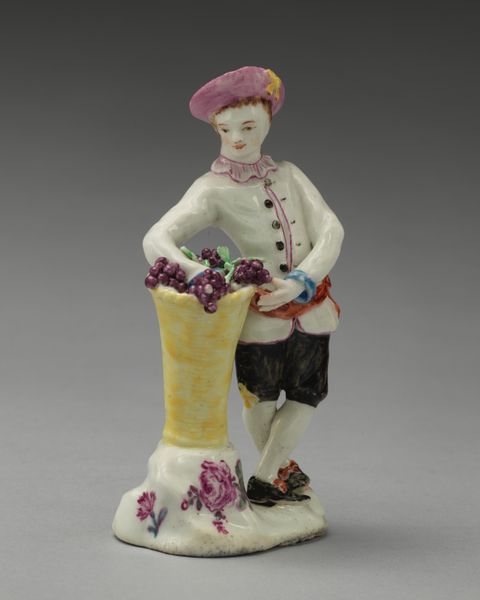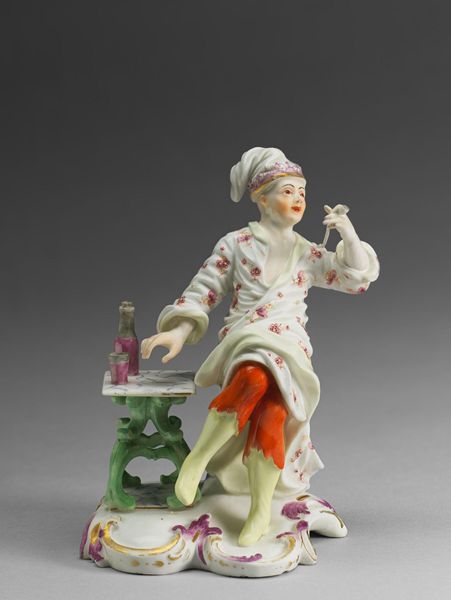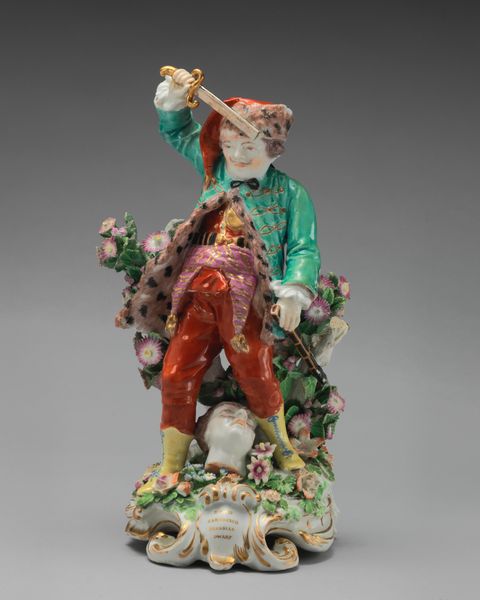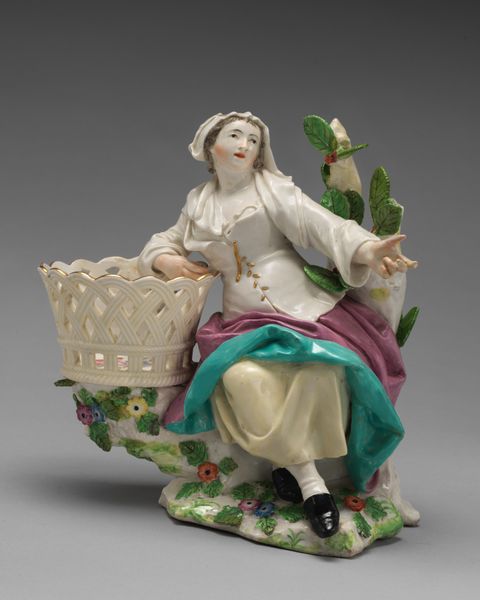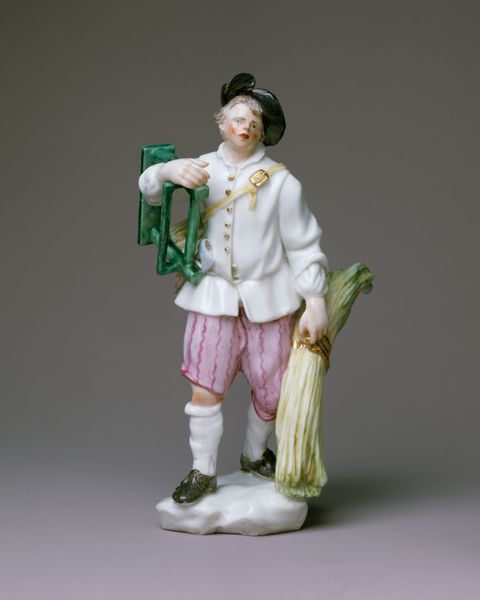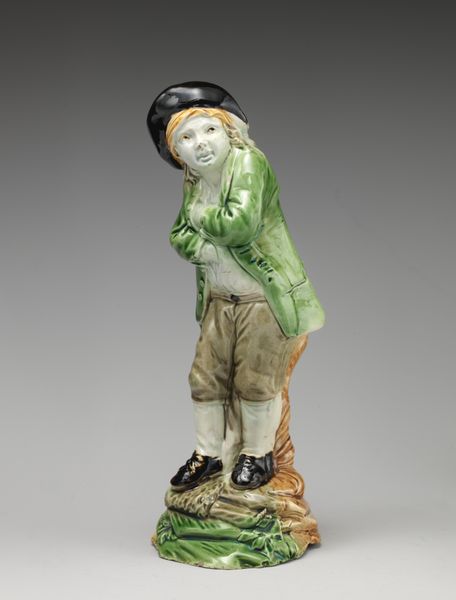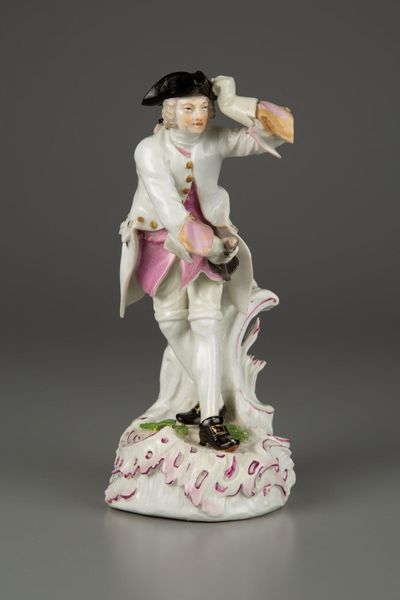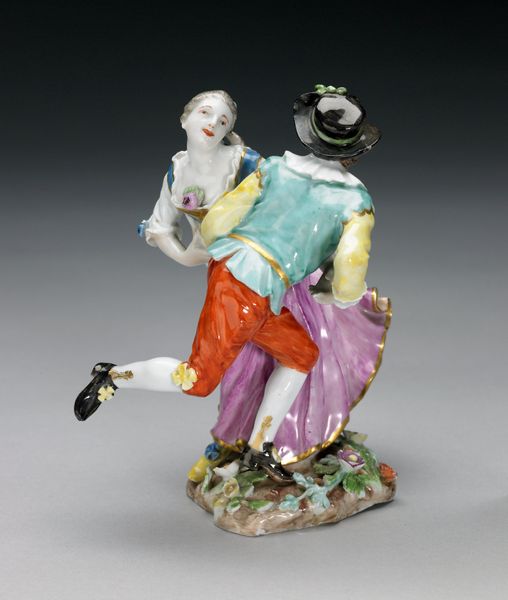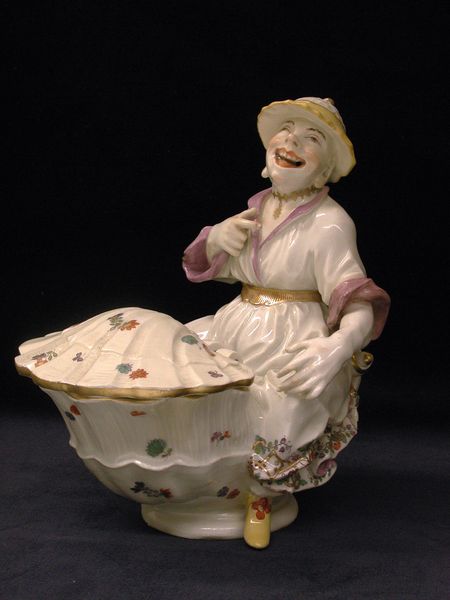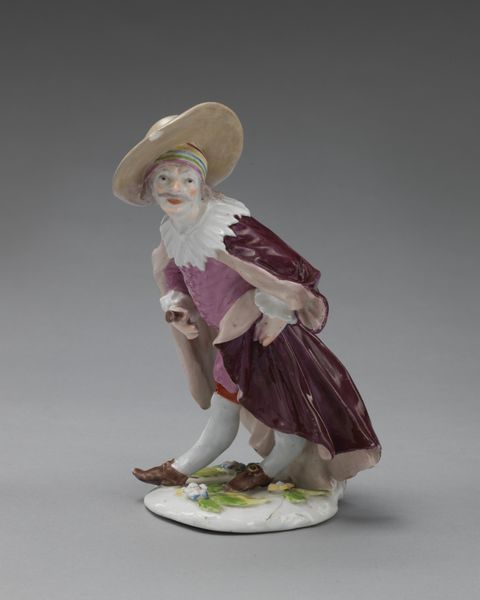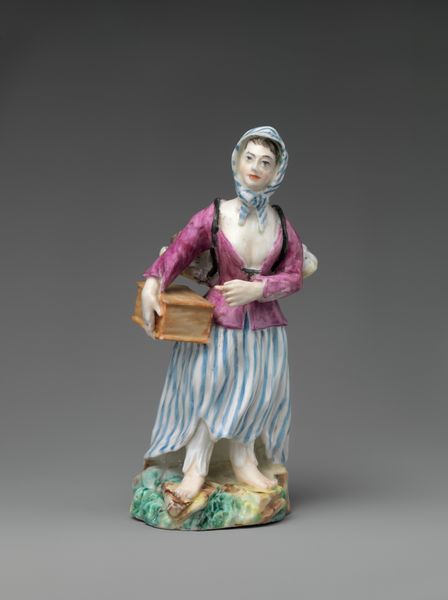
Male fruit seller (one of a pair) 1750 - 1760
0:00
0:00
ceramic, porcelain, sculpture
#
ceramic
#
porcelain
#
figuration
#
sculpture
#
genre-painting
#
decorative-art
#
rococo
Dimensions: 9 × 9 in. (22.9 × 22.9 cm)
Copyright: Public Domain
Curator: This charming piece, created by the Chelsea Porcelain Manufactory between 1750 and 1760, is titled "Male fruit seller." It is crafted from ceramic and porcelain and belongs to a pair currently residing at the Metropolitan Museum of Art. Editor: The figure strikes me immediately with its somewhat theatrical pose and the vivid colors of his garments. The pastoral scene and delicate rendering offer a very pleasing sensibility. There’s almost an aspirational quality to its vision of labor. Curator: Indeed, the work reflects the Rococo period's fascination with the lives of everyday people, viewed through an idealized, decorative lens. But the reality of street vendors, their marginalization, the complex labor relations are largely erased in this celebratory presentation. Editor: But, I wonder if it hints at some underlying anxiety about social mobility? He’s dressed neither as nobility nor peasant, creating visual interest through his ambiguous class status reflected in the colors of his costume, almost verging on commedia dell'arte, wouldn't you agree? Curator: I appreciate the nuance that you add about possible undercurrents, but given the period, the intent may be less subversive. What resonates for me, perhaps because I'm reading from our contemporary perspective, are the power dynamics embedded within representations of class and labor during the Rococo era. It makes me think about contemporary notions of precarity and disposable workers today. Editor: Ah, the perennial return of similar social imbalances through history! His very specific clothing could perhaps reveal something, even now, if analyzed in depth! It’s compelling to observe how artistic depictions can offer reflections of social issues. But I also wonder about the role the symbolism of 'fruit' would play. Is it about abundance or the fruits of one's labour? Curator: That’s where the power of visual symbols come to life, to illuminate possible interpretations within a certain context and space in time. It serves as a wonderful anchor to reflect on how the meanings and significations change over time in relation to their socio-political landscapes. Editor: Absolutely. Art objects like this allow us to not only view history, but also actively engage with it through different interpretive lenses, while also reflecting on our own situated present.
Comments
No comments
Be the first to comment and join the conversation on the ultimate creative platform.
